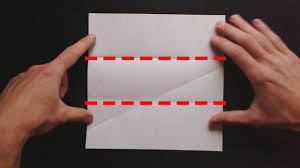A Better Table Summary
What It Is
This activity allows students to process the most essential elements of the day’s lesson. They create a summary, combine summaries, and critically analyze their peers’ summaries to come up with better summaries of the day’s lesson.
How It Works
- Ask every student to summarize the day’s lesson using only one sentence.
- Ask students to get into groups of no more than four and consolidate their sentence into one larger summary that contains all the essentials present in each of their sentences. Their new summary does not need to be contained in one sentence.
- Give student groups one blank sheet of paper (preferably 8 1⁄2” × 14” or 11” × 17”) and one color marker (different color markers should be assigned to different tables). Ask them to fold the paper in three parts. Next, ask them to assign a scribe to record their table’s summary using marker in the first folded section (caution them not to write too small).
- Ask groups to pass their papers to a neighboring table. Each group should now have a summary that belongs to another table. Ask them to read it and to critically analyze what is missing. How can they improve this sentence summary so that it is more complete and includes elements that are essential to understanding the topic? Allow students to use notes. Ask them to write the improved sentence underneath the original sentence in the second folded section and to pass the paper to a different table (not the original table), that group should do the same in the third folded section.
- Return the summaries to the original tables, and ask them to read and underline portions of the summaries that they think improved their original summaries.
- Ask volunteers to share elements that improved the summaries.
How to Ensure Higher-Order Thinking
By its very nature, this activity requires that students critically analyze summaries to find ways to improve them and to make them more complete. To provide clear criteria for success, give students a specific number of improvements to make. For example, you might say, “Add two new concepts to improve the table summary.”
Students may need assistance, so walk around and ask questions prompting them toward critical analysis. For example, you might say something like, “How did they address . . . ?” “Are there missing elements that can help clarify a potential misunderstanding with regard to . . . ?” For very incomplete summaries, pretend to completely misunderstand the summary, by taking it to a logical conclusion that is far off base. “So, you’re saying that when combustion occurs, it’s the result of someone turning on the lights?”

Source
Himmele P., and Himmele, W. Total Participation Techniques: Making Every Student an Active Learner. ASCD, 2017, pp.124-125.
